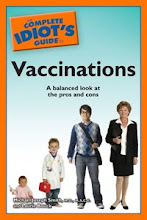Although BPA is also sometimes found in tableware, medical devices, dental sealants, and automobiles, among other places, the draft brief stated that humans primarily absorb BPA though food and drink. The
The draft brief points out that most ingested BPA is metabolized and eliminated in the urine. The remaining ("free") BPA in the body is probably harmful. Based on evidence from animal studies, infants and young children are thought to be less efficient at metabolizing and excreting BPA than adults, the draft brief states, so they retain higher levels of free BPA in their bodies. The draft brief also says that BPA seems to leach more easily from plastic into foods when the food is heated. As such, baby bottles (often heated up, of course, before given to the baby) seem like an especially potent source of exposure in infants.
Formula-fed infants aged 0 to 6 months, who are exposed to BPA primarily though baby bottles but also through the packaging of formula containers, might absorb about ten times the amount of BPA as a breast-fed infant, according to the draft brief.
Wednesday, April 16, 2008
BPA and Baby Bottles
A chemical often used to manufacture infant bottles, water bottles, and food packaging might be harmful to humans, according to a draft brief released this week by the NIH-funded National Toxicology Program's (NTP) Center for the Evaluation of Risks to Human Reproduction (CERHR). The NTP reviewed a number of mostly animal studies that indicated that Bisphenol A (BPA), used in resins and polycarbonate plastics, might cause neural changes, precancerous prostate and breast lesions, and early puberty, among other problems, at fairly low doses. At significantly higher doses than humans are likely to encounter, BPA has been proven to slow puberty and growth, and decrease survival rates in animal studies.
Subscribe to:
Post Comments (Atom)




No comments:
Post a Comment